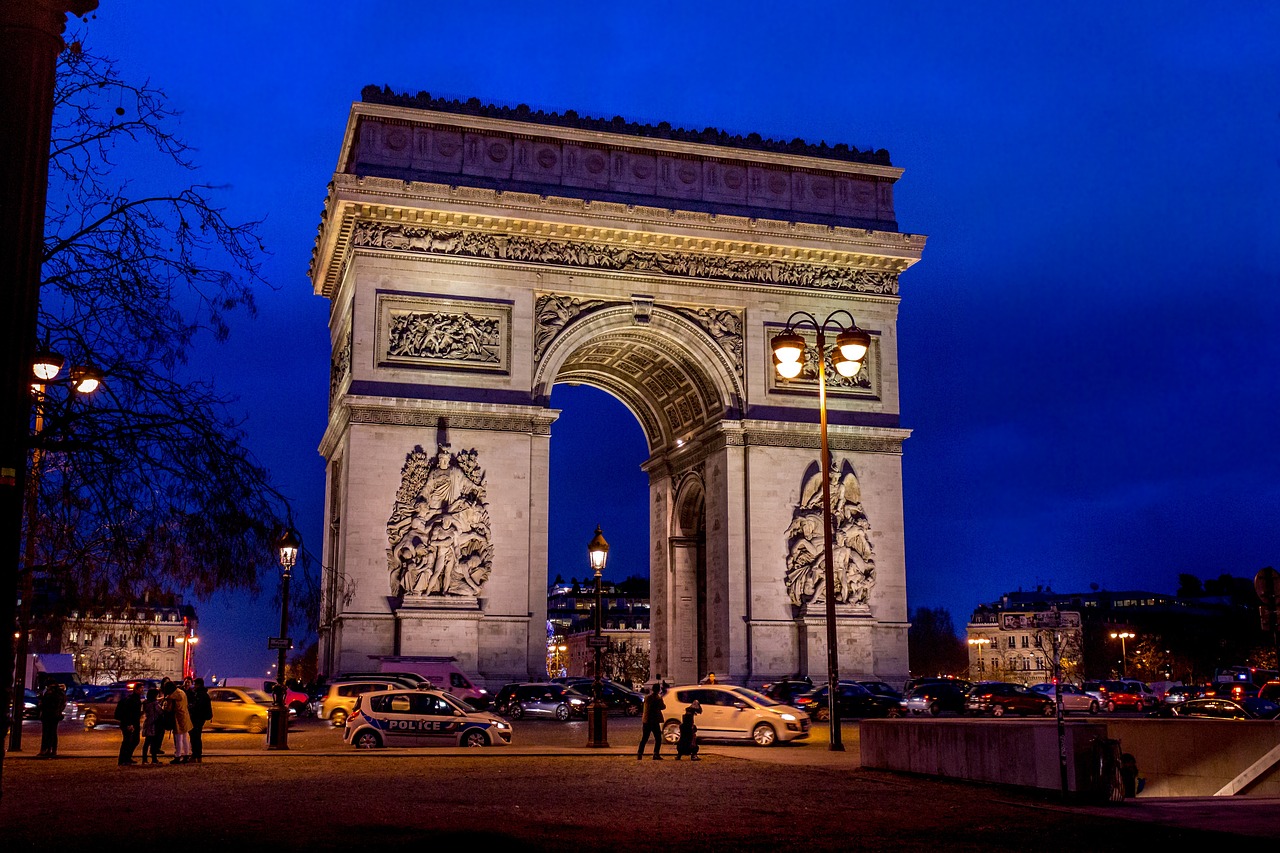Updated on 23 May 2025
The Arc de Triomphe in Paris isn’t just a monument – it’s a grand, solemn tribute to French military history, national pride, and the enduring legacy of Napoleon Bonaparte, it’s also the central meeting point of twelve grand avenues that radiate outward like a star – giving the square its name: Place de l’Étoile (“Star Square”). Standing proudly at the western end of the Champs-Élysées, this neoclassical giant offers not only one of the best panoramic views of the city, but also a deeply symbolic journey into the heart of French identity.
A Monument to Victory and Memory
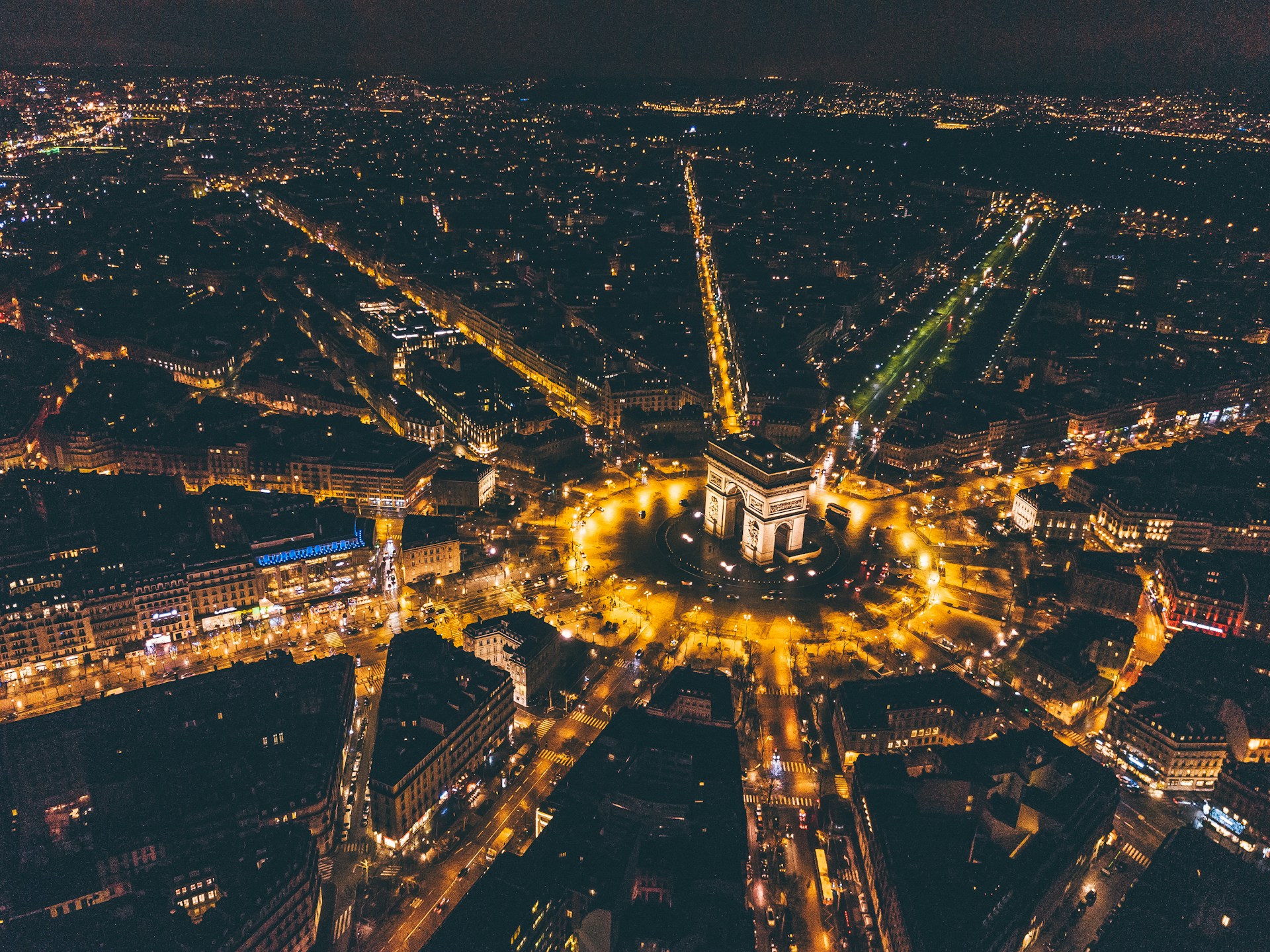
Commissioned by Napoleon I in 1806 after his victory at Austerlitz, the Arc de Triomphe was designed to honour the Grande Armée, the powerful French army that had triumphed across Europe. Inspired by the Roman Arch of Titus, it was meant to showcase the glory of the emperor and France itself.
But its construction wasn’t smooth: the work was halted after Napoleon’s fall and only completed in 1836, under King Louis-Philippe, thirty years later. Ironically, Napoleon never saw the finished monument, although his remains were ceremonially passed beneath it in 1840 when returned to France from Saint Helena.
Architecture & Symbolism
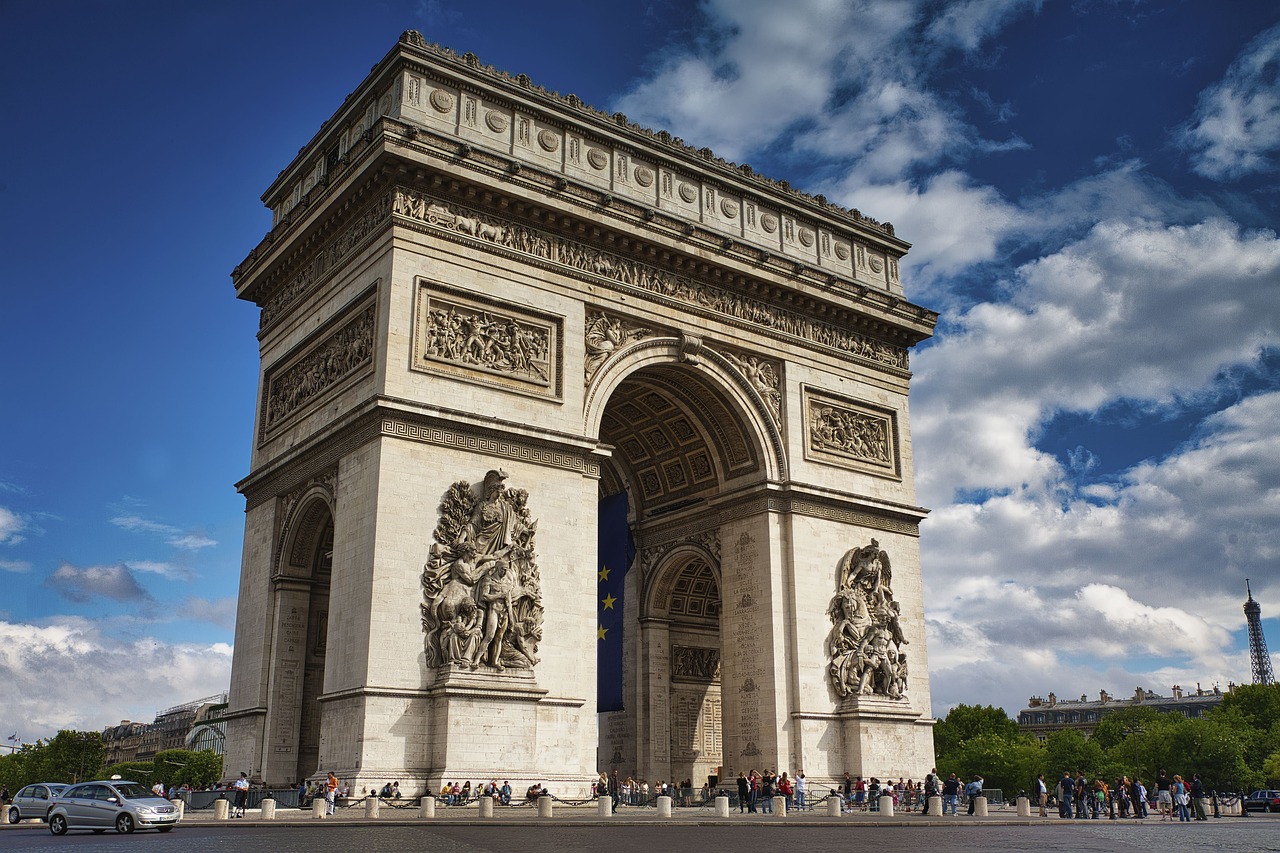
Standing 50 meters high and 45 meters wide, the Arc de Triomphe is the largest triumphal arch in the world. It is adorned with names of 660 generals, major battles of the French Revolutionary and Napoleonic Wars, and four massive relief sculptures that represent: The Departure of the Volunteers (La Marseillaise), The Triumph of 1810, The Resistance, and The Peace.
At its base lies the Tomb of the Unknown Soldier, added in 1921 to honour the unidentified dead from World War I. Its eternal flame, lit every evening at 6:30 p.m., is one of France’s most solemn daily rituals – a moment of silence and memory that links past to present.
Legends and Curiosities

- In 2021, the Arc de Triomphe was wrapped in 25,000 square meters of recyclable silver-blue fabric and red rope as part of a temporary art installation called L’Arc de Triomphe, Wrapped.
- On Bastille Day (July 14), the French military parade begins at the Arc de Triomphe and marches down the Champs-Élysées.
- Charles Godefroy, a WWI fighter pilot, famously flew his plane through the arch in 1919 to honour fallen comrades.
- After World War II, Charles de Gaulle marched under the arch as the city of Paris was liberated in 1944.
Climbing the Arc: What to Expect

While many admire the Arc from below, the real magic is at the top. A spiral staircase of 284 steps leads to the viewing platform (there is a lift for accessibility up to a certain level). The terrace offers breathtaking views over the Avenue des Champs-Élysées, the Eiffel Tower, La Défense, Montmartre, and the Louvre axis.
The experience is especially magical at sunset, when the city glows golden and the tower begins to sparkle in the distance.
The Arc de Triomphe anchors the Axe historique, a straight line of monuments stretching from the Louvre to La Défense. From here, you’re steps away from:
- Champs-Élysées – iconic shopping avenue
- Parc Monceau – elegant 18th-century garden
- Petit Palais & Grand Palais – beaux-arts exhibition halls
- Place de la Concorde – historic square with the Luxor Obelisk
More Triumphal Arches in Paris
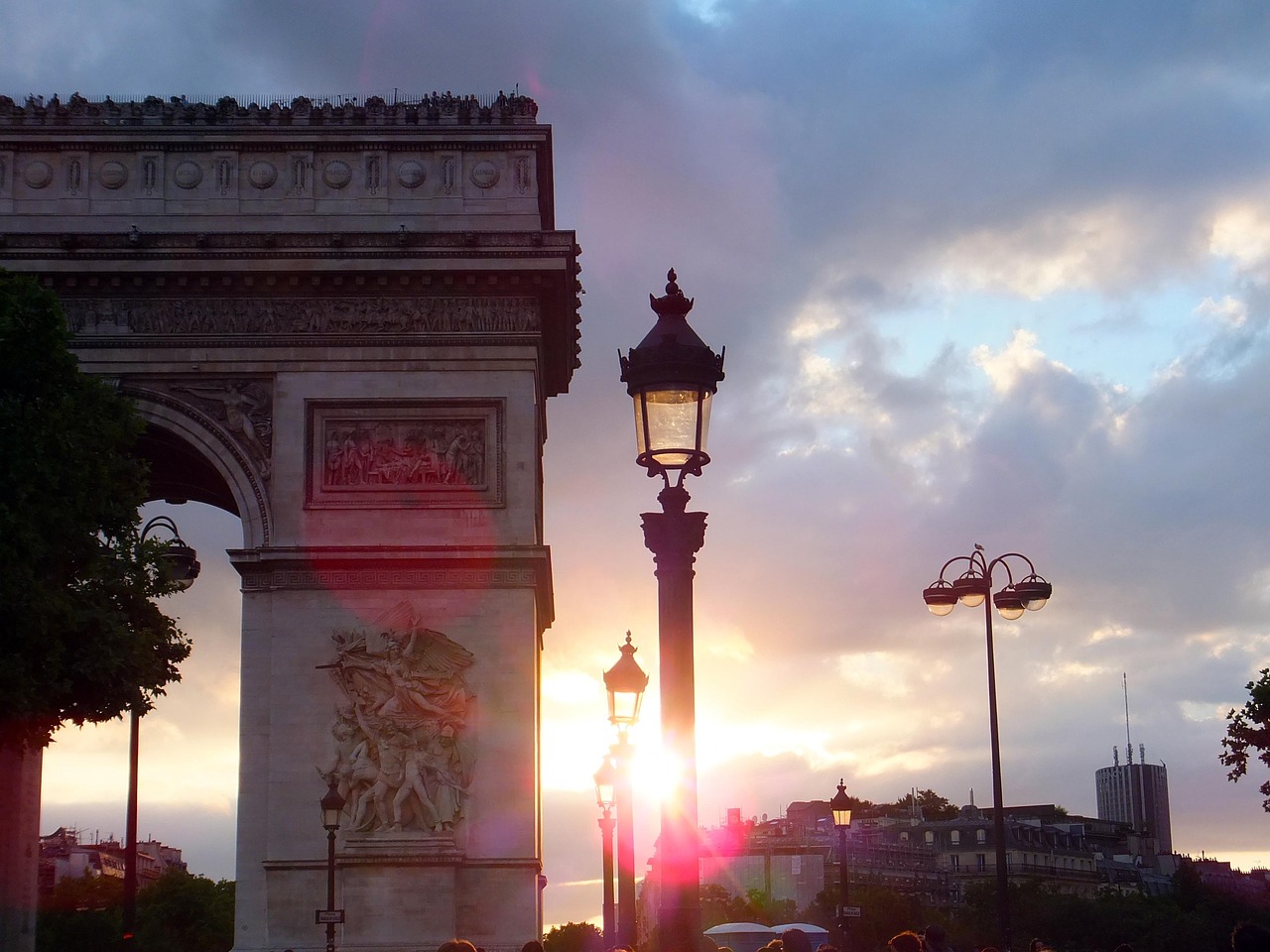
Paris is home to several impressive arches beyond the famous Arc de Triomphe. These arches not only celebrate military victories but also form part of the city’s historical and symbolic alignment – the Axe historique.
Napoleon Bonaparte, an admirer of classical antiquity and Roman grandeur, commissioned not just one but two triumphal arches in Paris to celebrate his military victories. The larger Arc de Triomphe became the centerpiece, while the smaller one, Arc de Triomphe du Carrousel, was built earlier and stands near the Louvre. Also called the “small Arc de Triomphe” or the Carrousel Arch due to its location, it perfectly aligns with the other two major arches on the Axe historique
While the Arc de Triomphe on Place Charles de Gaulle is the most famous, Paris is home to several other impressive triumphal arches:
- Arc de Triomphe du Carrousel – Located just west of the Louvre, this smaller arch was built to commemorate Napoleon’s victories and originally stood opposite the Tuileries Palace. Its design was inspired by the Arch of Constantine in Rome. Today, it is often referred to as the “small Arc de Triomphe” or the Carrousel Arch, and from its base, if you look west, you can see both the larger Arc de Triomphe and the Grande Arche of La Défense perfectly aligned on the Axe historique. Its design was inspired by the Arch of Constantine in Rome.
- Porte Saint-Denis – Built in 1672 to honor Louis XIV’s military triumphs in the Rhine campaigns. Its sculptural reliefs and imposing proportions make it a dramatic gateway into the northern parts of central Paris.
- Porte Saint-Martin – Erected in 1674, just a few blocks from Saint-Denis, this Baroque-style arch celebrates further victories of Louis XIV and is another photogenic, historic structure.
The Axe historique
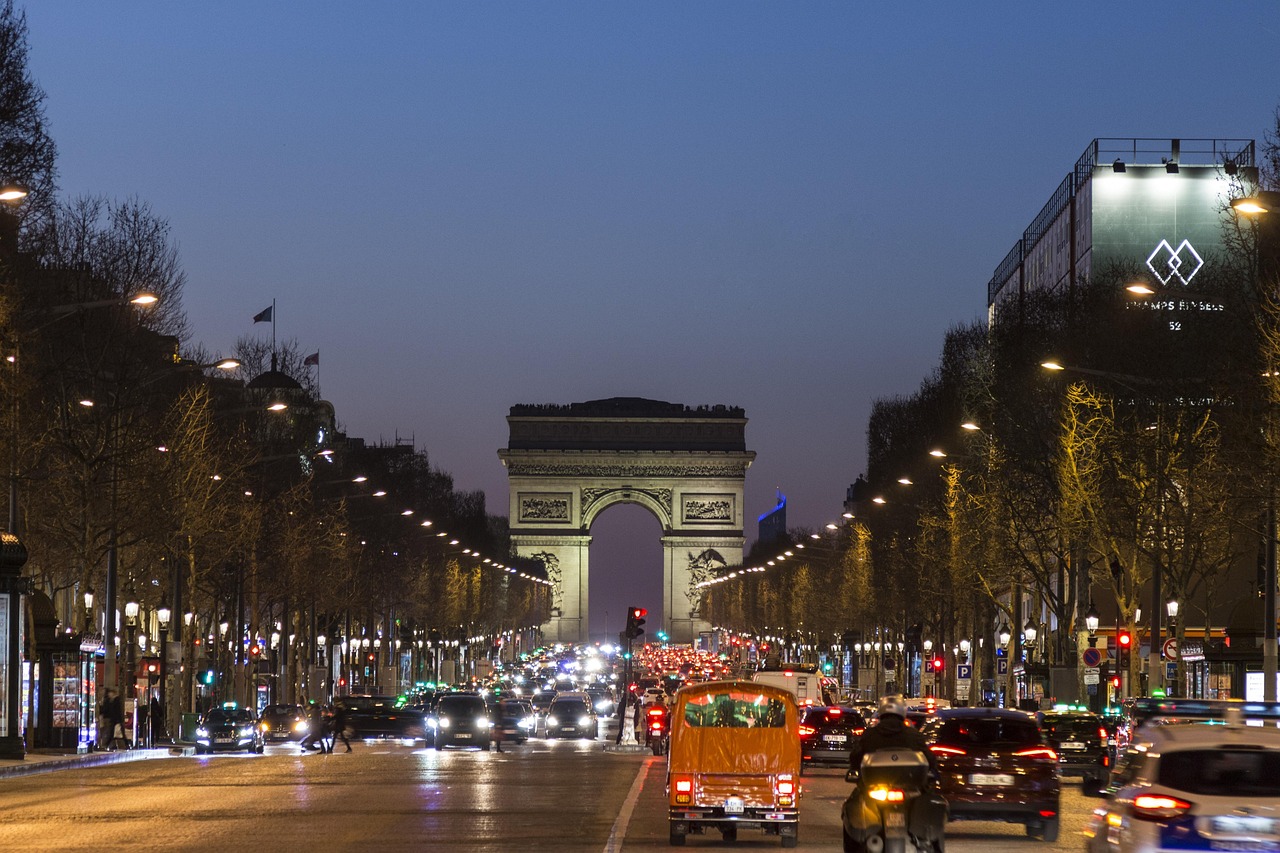
The Axe historique, also called the Voie Triomphale, is a symbolic alignment of triumphal arches and monuments that forms a majestic line across Paris. The three main arches – Arc de Triomphe du Carrousel, Arc de Triomphe, and La Grande Arche de la Défense – are perfectly aligned, spaced at regular intervals, and increase in size as they progress westward. Together, they reflect centuries of French ambition, architecture, and political legacy.
The axis stretches from the Louvre, through the Tuileries Garden, Place de la Concorde, Champs-Élysées, and the monumental Arc de Triomphe, all the way to the towering Grande Arche in La Défense – a modern arch so large that Notre-Dame Cathedral could fit underneath it.
Visiting the Arc de Triomphe in Paris

Location:
Place Charles de Gaulle, 75008 Paris
arc-de-triomphe.monuments-nationaux.fr
Opening Hours:
- Open daily from 10:00 a.m. to 11:00 p.m. (last entry 45 minutes before closing)
- Closed on January 1, May 1, and December 25
Tickets:
- Full price: €16 (adults)
- Free: Under 18s and EU residents under 26
- Access to the base (Tomb of the Unknown Soldier) is free
- Advance online booking recommended
How to Get There:
- Metro: Line 1, 2, or 6 to Charles de Gaulle – Étoile
- RER A: Charles de Gaulle – Étoile station
Important: Do not try to cross the traffic circle. Use the underground passage near the Champs-Élysées to reach the monument safely.
Arc de Triomphe & Paris For You App

Planning to visit the Arc de Triomphe in Paris? The Paris For You app (App Store, Google Play) makes it easier:
- Find the monument quickly with offline GPS
- Learn about each sculpture and name engraved in the stone
- Discover hidden details like the pilot who flew through the arch
- Get walking routes from the Eiffel Tower or the Louvre
- Save your visit and share photos directly from the app
Whether you’re admiring the eternal flame, climbing the steps at golden hour, or standing beneath the arch’s soaring curves, the Arc de Triomphe is a powerful symbol of remembrance and pride.
Also read:
Top 3 Things to Do in Paris
How to Get Around in Paris
